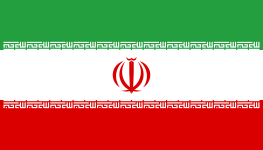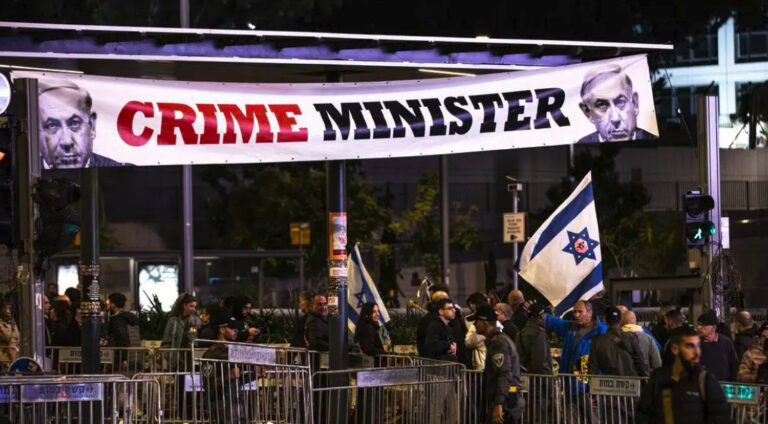
Flaf of Iran-Wikipedia
STRATEGIC ASSESSMENT. Iran’s April 14 direct attack on Israeli territory, involving approximately more than 170 armed drones, 30 cruise missiles, and 120 ballistic missiles, appeared intended to demonstrate Iran’s military technology advances and establish a measure of deterrence against Tehran’s main regional adversary. Iranian leaders apparently concluded they could no longer avoid retaliating for repeated Israeli airstrikes against its high-ranking Islamic Revolutionary Guard Corps – Qods Force (IRGC-QF) commanders in Syria, including the April 1 strike on an Iranian diplomatic facility where several of them were meeting. The attack on the building killed seven IRGC-QF commanders responsible for providing support to Tehran’s key regional allies, Lebanese Hezbollah and the Assad regime in Syria. Had Iran not responded to that strike, Iran’s regional allies might have begun to question Iran’s willingness to join them in undertaking risks to achieve their common goals – undermining Tel Aviv’s offensive against a fellow member of the Axis of Resistance – Hamas.
Yet, the volley only partially succeeded in establishing deterrence against Israel. A coalition that included the United States, several European powers, and Arab states, including Jordan and Saudi Arabia, helped Israel intercept approximately 99% of the projectiles Iran launched on April 14. Nearly half of its ballistic missiles failed at launch or in flight, and the nine missiles that U.S. officials confirmed had landed at two Israeli air bases in the Negev did little damage. Iran argued that it provided ample warning of the volleys, allowing time for Israel to mount a defense – and giving force to Iran’s threat that a future attack would penetrate Israel and allied defenses to cause major damage and casualties. Although many experts refute claims by Iranian officials that they withheld their most advanced missile and drone technology from the April 14 barrage, Iran’s programs continue to advance, holding out the potential for Iran to launch more advanced and capable systems against Israel in the future. The scope of Iran’s missile and drone barrage caused some panic inside Israel as it was underway and might cause Israeli leaders to think twice before continuing their pattern of targeted killings of senior IRGC-QF commanders in Syria or elsewhere in the region. The U.S. effort to dissuade Israel from a counter-strike response demonstrates Iran’s ability to destabilize the region at a time and place of its choosing and to complicate U.S. efforts to prevent the October 7-sparked crisis from expanding into a regional war. However, as an indication that the Iranian strike did not necessarily deter Israel, on April 19, Tel Aviv responded with an operation, apparently conducted from inside Iran, to attack a military base near Isfahan with armed drone vehicles – although both sides downplayed the severity and effect of the assault and Tehran said it would not respond to it. The operation was intended to signal that, despite Iran’s new willingness to attack Israeli territory directly, Israel is willing and able to reach even sensitive locations in Iran.
A further complication for Tehran is the large-scale interception of Iran’s barrage, which might cause Iranian leaders to rethink some aspects of their national security strategy. Lacking a large and advanced conventional military force, Iran’s development of missiles and armed drones has been a core element of the Islamic Republic’s strategy to deter powerful adversaries such as the United States, Israel, and others. If Iranian leaders, as a result of the failed attack on Israel, judge the missile and drone arsenal as unreliable deterrents, they are likely to consider efforts to develop a working nuclear weapon. Iran’s uranium enrichment program, which has advanced since the Trump administration, in 2018, exited the multilateral Iran nuclear agreement, is assessed by the International Atomic Energy Agency (IAEA) as able to produce enough fissile material for a nuclear weapon within weeks of a decision to do so. However, according to U.S. and other intelligence agencies, Iran requires additional research and experimentation to develop the detonation mechanism needed for a nuclear bomb. Iran’s intentions to develop and field a nuclear weapon remain unclear, but a failure of its missile and drone arsenal to establish deterrence could shift Iran’s calculations in favor of producing a nuclear weapon—a scenario with dire implications for the region.
It is also likely that the interception of so large a percentage of Iran’s volleys will cause Iranian strategists to conclude that Iran should concentrate on the main thrust of its national security strategy – arming, training, and funding a wide range of regional proxies, the so-called “Axis of Resistance,” able to project power throughout the region. Operating through its network of confederates gives Iran’s actions deniability – a key factor in fulfilling a key Iranian goal of avoiding a direct conflict with the United States. Iran’s allies, particularly Lebanese Hezbollah, have demonstrated a clear ability to cause casualties and damage in Israeli towns and villages using large arsenals of rockets and short-range missiles despite a significant interception percentage by Israel’s sophisticated defenses. On October 7, Hamas demonstrated an ability to penetrate Israel’s defenses on the ground, and the Houthi movement in Yemen has caused turmoil in global trade through its missile and drone attacks on commercial shipping in the Red Sea. Iran’s militia allies in Syria and Iraq have, on some occasions, successfully struck U.S. forces deployed in the region. Iran’s missile and drone strike on Saudi energy facilities in 2019 did considerable damage, in large part because those targets were close to Iran and, therefore, harder to intercept. Iran’s successes, in contrast to the observed failure of its April 14 barrage against Israel, might argue against an additional focus on striking Israel from Iranian territory. On the other hand, Iran’s regional allies have their own agendas that, taking into account political conditions in the countries where they are based, contradict or otherwise differ from Iran’s intentions or instructions.
Iranian leaders will also have to wrestle with a second-order effect of their decision to undertake a large direct strike against Israel – the setting back of Iran’s years-long effort to lower tensions with major Arab states, particularly the Gulf monarchies, and drive a wedge between them and their chief security partner, the United States. The participation of both Jordan and Saudi Arabia in the defense of Israeli airspace on April 14 demonstrates that Iran has failed to translate the unrest over Israel’s offensive in Gaza into a broad rift between Israel and major Arab states. Iran’s attack revived regional concerns that Iran’s regime is fundamentally aggressive and seeks to intimidate regional governments allied with the United States. To that extent, Iran undid the progress it made by rebuilding ties to the United Arab Emirates (UAE) and Saudi Arabia over the past few years, culminating in a China-brokered Iran-Saudi restoration of full diplomatic relations in March 2023. Iran’s missile attack also further widened its rift not only with the United States but also with governments in Western Europe that participated in the defense of Israel and are joining U.S. officials to add economic sanctions on suppliers of missile and armed drone components to Iran. In the wake of the Iranian attack, the U.S. Congress advanced a raft of new Iran sanctions legislation intended to limit the U.S. ability to release blocked Iranian assets and to further authorize U.S. action to limit Iranian oil sales to China. Although Iran has navigated the effects of regional isolation and U.S.-led sanctions for many years, its missile attack on Israel has clearly set back its efforts to focus international criticism on Israel’s offensive in Gaza and draw recruits to its efforts to isolate and punish the Israelis.





